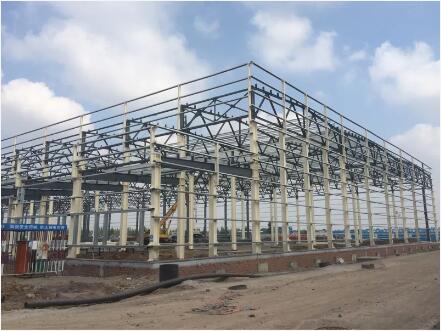Best Practices for Ensuring Energy Efficiency in Cost-Effective Steel Frame Housing: A Comparison with Traditional Housing Methods
2024-06-04
Energy efficiency is a critical consideration in modern construction, impacting both environmental sustainability and long-term cost savings for homeowners. Cost-effective steel frame housing presents unique opportunities to enhance energy efficiency, but it also requires specific strategies to maximize these benefits. Here, we explore the best practices for ensuring energy efficiency in steel frame housing and compare them with traditional housing methods.
1. Insulation Integration
Best Practice:
In steel frame housing, using high-quality, continuous insulation is crucial to prevent thermal bridging, where heat transfers through the steel and leads to energy loss. Materials such as rigid foam, spray foam, and insulated panels can be effectively integrated into the steel framework.
Comparison with Traditional Methods:
Traditional wood-framed houses typically rely on batt insulation placed between studs. However, wood is a less conductive material than steel, making thermal bridging less of an issue. Continuous insulation in steel framing helps match or exceed the insulation performance of traditional methods.
2. Air Sealing Techniques
Best Practice:
Ensuring airtight construction is vital for energy efficiency. Sealing gaps around windows, doors, and joints in steel frame housing can be achieved with high-performance caulks, foams, and weatherstripping. Utilizing advanced air barrier systems during construction helps to maintain airtightness.
Comparison with Traditional Methods:
Air sealing is equally important in traditional housing, where gaps and cracks can significantly affect energy efficiency. However, steel frame construction, with its precision-fabricated components, often allows for better control and implementation of airtight sealing compared to traditional stick-built homes.
3. High-Performance Windows and Doors
Best Practice:
Installing high-performance, energy-efficient windows and doors with low-emissivity (low-E) coatings and insulated frames is essential. These components help to minimize heat loss in winter and heat gain in summer.
Comparison with Traditional Methods:
Both steel frame and traditional houses benefit from energy-efficient windows and doors. The difference lies in the framing around these components. Steel frames need careful attention to thermal breaks to avoid heat transfer, while traditional methods often rely on the natural insulative properties of wood.
4. Reflective Roofing and Siding Materials
Best Practice:
Using reflective roofing and siding materials can help to reduce heat absorption and improve energy efficiency. Cool roofs and reflective coatings are particularly effective in hot climates, helping to lower cooling costs.
Comparison with Traditional Methods:
Reflective roofing and siding materials are beneficial for both steel frame and traditional housing. However, steel frame housing can leverage these materials more efficiently due to the typically higher thermal conductivity of steel, making reflective materials a crucial component in mitigating heat transfer.
5. Advanced HVAC Systems
Best Practice:
Integrating advanced heating, ventilation, and air conditioning (HVAC) systems, including energy-efficient heat pumps and smart thermostats, enhances overall energy efficiency. Properly sizing and placing HVAC systems ensure optimal performance and energy savings.
Comparison with Traditional Methods:
Energy-efficient HVAC systems are universally beneficial. In steel frame housing, the precision of prefabricated construction can lead to better-optimized HVAC system placement and performance compared to traditional housing, where on-site adjustments might affect efficiency.
6. Solar Energy Integration
Best Practice:
Designing steel frame houses with solar energy in mind, including optimal roof orientation and space for solar panels, can significantly reduce energy costs. Incorporating solar thermal systems for water heating can further enhance energy efficiency.
Comparison with Traditional Methods:
Solar energy integration is advantageous for both construction types. The uniform and predictable nature of steel frame construction can facilitate more efficient solar panel installation compared to traditional housing, where roof irregularities might pose challenges.
Conclusion
Ensuring energy efficiency in cost-effective steel frame housing involves a combination of best practices tailored to the unique properties of steel. High-quality insulation, airtight construction, energy-efficient windows and doors, reflective materials, advanced HVAC systems, solar integration, and smart home technologies are all essential components. When compared to traditional housing methods, steel frame housing can achieve comparable or superior energy efficiency with the right strategies in place. By adopting these best practices, developers and homeowners can create sustainable, energy-efficient homes that reduce environmental impact and offer long-term cost savings.



